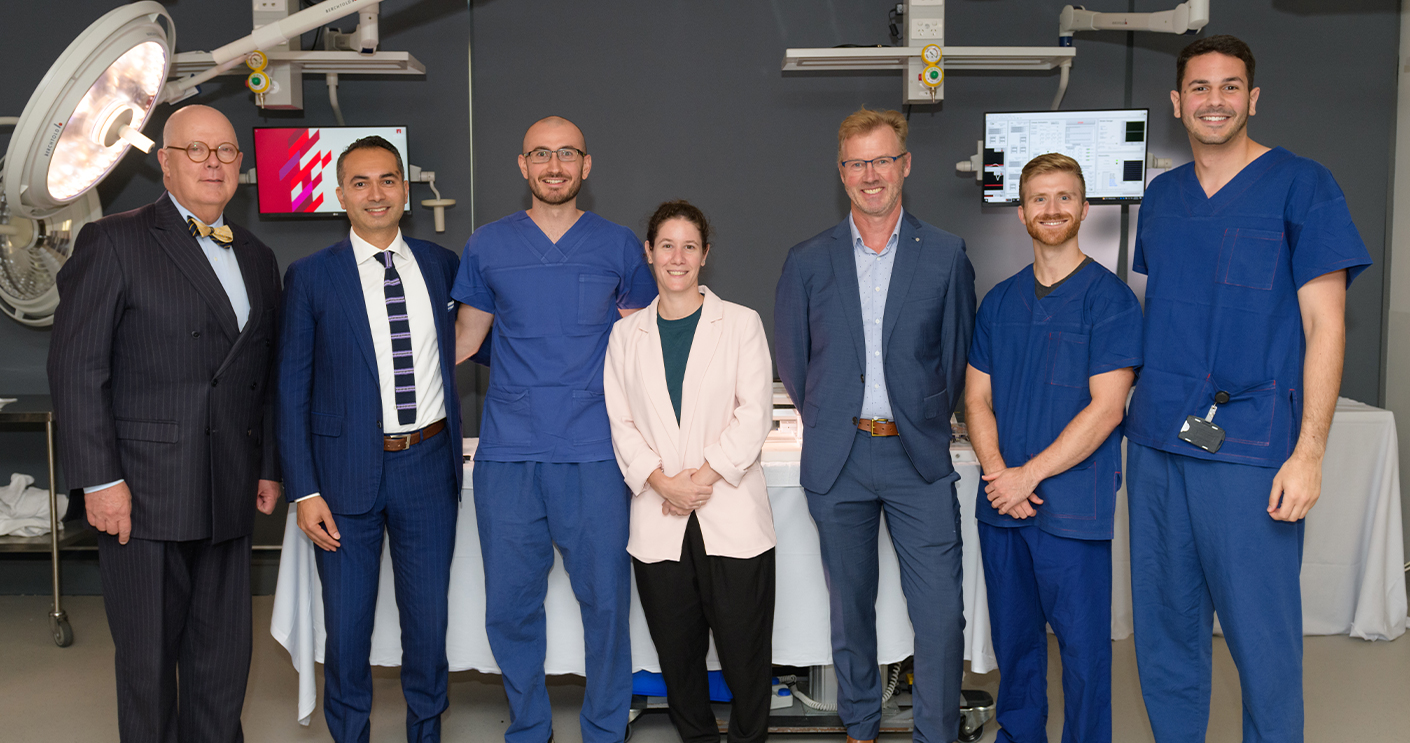Pictured (L-R): Vice-Chancellor Professor S Bruce Dowton, Associate Professor Sumit Raniga, Mr Robert Porta, Ms Melody Labrune, Associate Professor Richard Appleyard, Mr David Axford, Dr Mohammad Haddara
A team of multidisciplinary researchers that has already built the world’s most advanced shoulder and hand simulators has unveiled a state-of-the-art laboratory where new techniques to improve joint replacement will be investigated.
Established in 2019, the MQ Health Translational Shoulder Research Program is an intensive collaboration between academic shoulder surgeons, biomechanical engineers, radiologists and industry partners.
And with keen interest being shown by institutions and companies around the world, there is huge potential for it to grow.
The program, which has attracted nearly $2 million in funding over the past three-and-a-half years, is led by pioneering shoulder and elbow specialist Associate Professor Sumit Raniga and the Faculty of Medicine, Health and Human Sciences’ Director of Orthopaedic Research, Associate Professor Richard Appleyard.
The researchers showcased their work, including a demonstration of the simulators, at the official launch on 29 March. The event was attended by Vice-Chancellor Professor S Bruce Dowton, Deputy Vice-Chancellor (Research) Professor Sakkie Pretorius, Deputy Vice-Chancellor (Medicine and Health) Professor Patrick McNeil and other senior leaders.
Associate Professor Raniga says they have multiple projects under way, including advancing understanding of normal and pathological shoulder biomechanics, designing and testing advanced shoulder prostheses, 3D computer modelling studies of normal and pathological anatomy, and developing improved surgical techniques.
“In addition to our simulators, we are investigating the development of novel molecular therapies and have just started a seven-year collaboration to develop nanotechnology applications in joint replacement surgery,” he says.
“Our shoulder simulator moves just like a natural human shoulder and has already revolutionised our understanding of shoulder biomechanics. Now it will be the ideal tool for testing the incorporation of nanotechnology into the design of shoulder replacement prostheses.
“We have also recently received a grant from Aesculap, the research arm of B. Braun, to use our expertise to create the world’s most sophisticated knee simulator.
“We are the only institution in the world doing this type of translational research. We’ve reached the point where other universities don’t see us as competitors and are instead lining up to work with us.
“What we need now are more PhD and master students so we can take on more projects. We’ve already had to turn away three potential industry partners because we don’t have enough capacity.”
The Vice-Chancellor spoke enthusiastically about what the new lab represents in the University’s mission to provide cutting-edge translational research for the world.
“It has been over ten years since Macquarie University Hospital opened, and today we are seeing our vision for a truly integrated academic health centre realised in this research program,” Professor Dowton said.
“Our growing reputation for shoulder surgery shows that an Australian university can not only successfully host a healthcare precinct, but it can be one that is respected on the international stage.”


 Back to homepage
Back to homepage